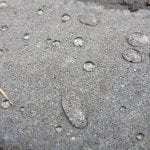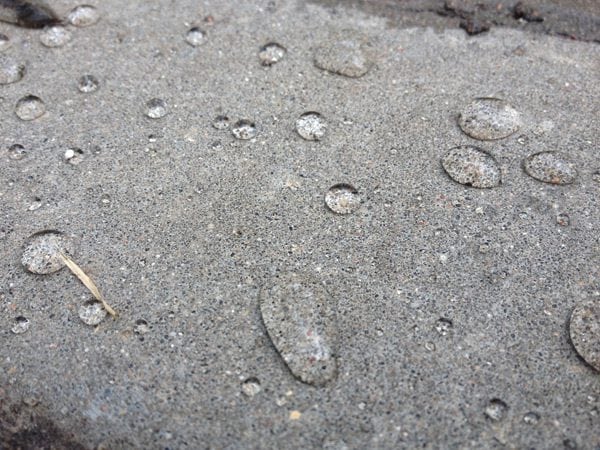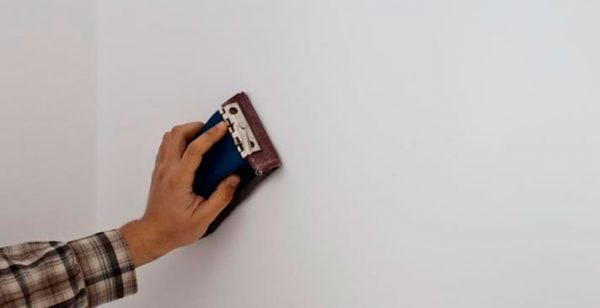First you need to figure out why you need a water-repellent primer, and what is its scope. The primer is an opaque liquid, which, after penetrating into the base and drying, creates a strong water-repellent film. Moreover, applied to concrete in the bathroom, in the kitchen or on the facade, it increases the adhesion of the main coating with finishing materials. This is especially important for such jobs:
- Types of soil and how it works
- Work technology
- Work in the bathroom and toilet: what should be the soil

- laying ceramic tiles;
- facade decoration;
- applying a decorative coating in the form of plaster;
- application of paint.

Moisture-resistant primer (also called hydrophobic) also prevents the destruction of various materials as a result of prolonged exposure to moisture, such as drywall, concrete, brick, etc. porous materials.
to contents ↑It is because of constant contact with water in such rooms as a bathroom, shower, laundry, washing that the most frequent exfoliation of the finishing material from the base of the walls, floor, and ceiling is observed.
Types of soil and how it works
By applying in several layers the soil can reliably protect the surface from water penetration. Naturally, this is not a replacement for waterproofing, but as a preliminary protection, a hydrophobic soil is ideal.
Conventionally, the soil can be divided into:
- adhesive
- firming.
Depending on the primary purpose, various types of primers are used. For example, for a bathroom it is better to use adhesive compounds when working on a plastered wall. This will protect the tile from rash. The main waterproofing role in the bathroom is played by ceramic tiles. In the case of working on a loose facade, before laying a decorative coating such as bark beetles and others, sometimes additional treatment with reinforcing compounds is necessary. Penetrating primer is able to penetrate 3-5 cm deep into concrete, which reliably protects the facade surface from cracking and penetration of moisture.
to contents ↑Work technology
Work with a waterproofing primer for concrete should be carried out strictly according to technology. It is important to prepare the surface before applying the primer:
- To clear walls of construction debris, dust, sand.
- Removing large protrusions sticking out of stucco fragments.
- The surface is sanded and leveled (in order to increase adhesion and reduce the consumption of adhesive mixtures).
- Large cracks and depressions should be repaired with plaster.
- Wipe the entire surface with a damp cloth and wipe off the dust.
- Apply a hydrophobic primer evenly without gaps.

The primer shows its waterproofing properties after 10-12 hours. Often, a hydrophobic primer is added to the solution to increase its strength, however, it is worth remembering that this is a violation of construction technology, and its use is not allowed more than 4% of the total solution volume.Work is carried out in dry, ventilated rooms, with a temperature of 10 degrees Celsius.
Freezing of the soil solution is not allowed, if this happened, the composition is considered damaged and must be disposed of. Despite this, builders often thaw the soil at room temperature and use it in their work.This cannot be done categorically, since if a hydrophobic film appears, it becomes extremely unstable and short-lived.
to contents ↑Work in the bathroom and toilet: what should be the soil
- the primer should be easily applied to concrete, penetrate deeply into the plaster;
- after drying, the surface in the bathroom should become hydrophobic, i.e. repel water and not penetrate deep into the solution;
- the primer should dry evenly without forming wet spots;
- concrete surface must be hardened;
- after application, the thinnest protective water-repellent film should be felt or noticeable.
Only in such cases the vapor and water permeability necessary for wet rooms is achieved. Despite the presence of ceramic tiles, concrete can be exposed to prolonged exposure to moisture. It penetrates through cracks in the joints, and can for a long time remain in the cavities between the ceramic tile and the plaster.



